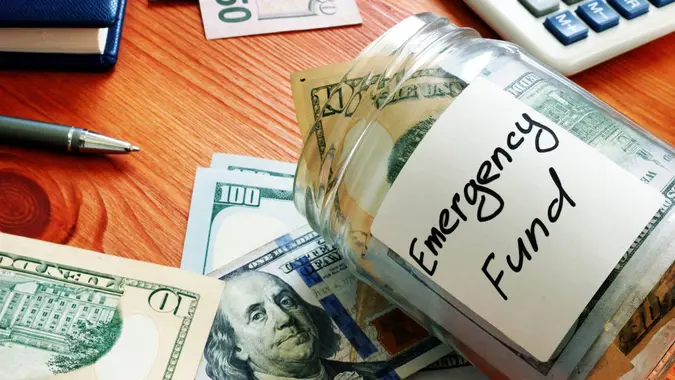5 Financially Crucial Tips To Live Frugally in Hawaii

Commitment to Our Readers
GOBankingRates' editorial team is committed to bringing you unbiased reviews and information. We use data-driven methodologies to evaluate financial products and services - our reviews and ratings are not influenced by advertisers. You can read more about our editorial guidelines and our products and services review methodology.

20 Years
Helping You Live Richer

Reviewed
by Experts

Trusted by
Millions of Readers
Living in Hawaii is a dream for many, but the high cost of living can turn paradise into a savings nightmare. When everything has to be imported and shipped, prices on everything from gas to food have a pretty premium price tag.
That’s good to know if you are planning a Hawaiian vacation, but what about the affordability of trying to live there? Hawaiian real estate, whether you rent or own is exorbitant, to say the least. In fact, here are some key takeaways from the Hawaii Statewide Real Estate Report:
- Average sale price for single-family homes: $1.25 million
- Median sale price for single-family homes: $975,000
- Average sale price for a condominium: $717,095
- Median sale price for a condominium: $555,000
With those estimates in mind, it’s easy to see how living a Hawaiian lifestyle can cost a pretty penny. If you’re interested in and financially able to move to Hawaii, here are some frugal tips to help you keep a balanced budget.
Choose Your Island Wisely
The cost of living varies significantly between the islands. For more affordable living, consider islands like Moloka’i, where the cost of living is 3.5% lower than Hawaii’s average. If you are looking for affordable housing, look for options outside of the most expensive areas. For example, the Big Island might have some better deals.
According to Realtor.com, the median listing home price in Honolulu was $639,000 in December 2024, trending down -12.4% year-over-year moving into 2025. The median listing home price per square foot was $724 and the median home sold price was $653,000.
Embrace Local Markets
Food can be expensive in Hawaii, especially imported goods. According to a study conducted by the University of Hawaii, groceries on average are about 11% higher than the national average.
To counter this, save money by shopping at local farmers’ markets for fresh, locally-grown produce. This not only supports the local economy but also reduces your grocery bill.
Utilize Public Transportation
As of the beginning of 2025, the average price of gas in Hawaii is about $4.60 compared to the national average of $3.13. An over-dollar difference can make or break a frugal lifestyle, which is why public transportation is highly recommended.
Oahu, for example, has an extensive bus system that can help you save on transportation costs. If you’re living in an area with good public transit, consider forgoing a car to save a huge amount. Besides, walking and biking are great when you’re living in such a beautiful place.
Practice Energy Efficiency
Electricity rates in Hawaii are the highest in the nation at about 44.14 U.S. cents per kilowatt-hour according to Statista. Use energy-efficient appliances, switch to LED bulbs and consider solar panels to reduce your utility bills.
Enjoy Free Activities
Hawaii is rich in natural beauty, and many of its best attractions are free. Enjoy beaches, hiking trails and public parks without spending a dime. You don’t live in Hawaii for expensive casinos, fancy restaurants or pricey sporting events, and it’s best to keep that in mind and enjoy the view.
Final Take To GO
The bottom line is that the laws of supply and demand dictate that living in a tourist destination can be costly, but it also offers unique opportunities. Look for resident discounts on attractions and dining and consider part-time work in the tourism industry for extra income.
Living frugally in Hawaii requires careful planning and smart choices, but it’s possible to enjoy the Aloha State’s beauty and culture without breaking the bank.
 Written by
Written by  Edited by
Edited by 
























